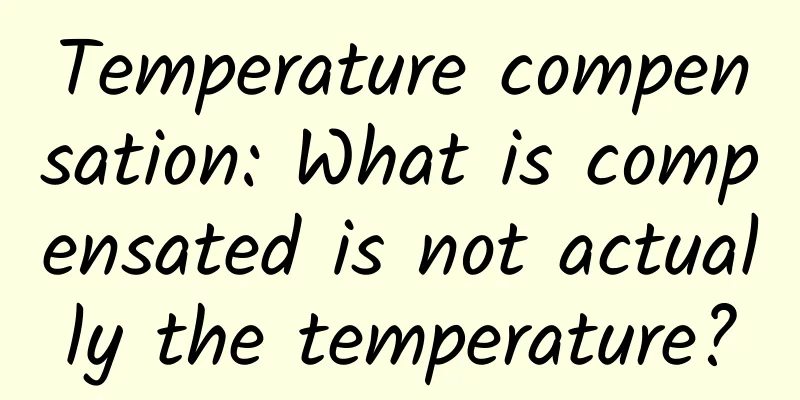Temperature compensation: What is compensated is not actually the temperature?

How do batteries work?In communication power supply, batteries play an important role in ensuring uninterrupted power supply for communication equipment. So, how do batteries ensure the provision of reliable backup power? When the battery needs to store electrical energy, it converts electrical energy into chemical energy through chemical reactions and stores it. This process is called charging, which is similar to storing water in a pool. When the battery needs to provide electrical energy, it converts chemical energy into electrical energy through chemical reactions. This process is called discharge, which is similar to drawing water from a pool. Why is temperature compensation needed?During the process of charging/discharging the battery, the chemical reaction is sometimes too strong/slow, causing the battery to not work properly. In order to ensure the normal energy conversion and protect the battery health, "temperature compensation" is required. Next, we introduce the two main factors that affect the intensity of battery chemical reactions: (1) Temperature: The intensity of the battery's chemical reaction is closely related to temperature. Under the same charging voltage conditions:
(2) Float charge voltage: Correct float charge voltage is the basic guarantee for battery health. At the same temperature:
Since our communication power supply is used in a variety of scenarios, the actual ambient temperature of the battery varies greatly, which has a great impact on the chemical reaction inside the battery. At this time, the impact of temperature changes on the battery can be weakened by adjusting the "floating charge voltage".
The function of ensuring normal energy conversion of the battery by adjusting the "floating charge voltage" is "temperature compensation". Reasonable implementation of "temperature compensation" can effectively extend the service life of the battery and improve the battery's performance. How to achieve temperature compensation?Taking the communication DC switching power supply as an example, to achieve temperature compensation, the communication DC switching power supply needs to be able to monitor the temperature of the battery in real time and be able to adjust the floating charge voltage of the battery in time according to the measured temperature. The monitoring unit in the communication DC switching power supply has the ability to monitor temperature and adjust the floating charge voltage. For communication DC switching power supplies using 48 V battery packs, temperature compensation is usually based on 25 °C, the float charge voltage is based on 53.5 V, and is adjusted at -3 mV/°C per (2 V) battery. For example, for a 48 V battery pack for communication power, if the battery temperature is detected to be 10 °C, the float charge voltage is calculated as follows: V float=53.5 V+(10°C-25°C)×(-3 mV)×24=54.58 V For communication power supply, the battery float charge voltage is higher than 53.5 V in winter and lower than 53.5 V in summer. This is the result of temperature compensation, which is conducive to better management and protection of the battery. Can the battery be kept healthy by relying solely on “temperature compensation”?After reading this, I believe you have understood the basic principle of temperature compensation. But can the battery health be guaranteed by relying solely on "temperature compensation"? Answer: Of course not, temperature compensation is not omnipotent! The temperature compensation function can minimize the impact of temperature on the battery, but it does not mean that it can be used at any temperature by relying on this function.
Especially in sites where the ambient temperature changes greatly, the temperature has a great influence on the chemical reaction speed in the battery. If the battery capacity is not fully utilized, the battery life will be shortened if the battery only relies on its own temperature compensation function. Therefore, in order to maintain the battery's optimal operating temperature of 20℃~25℃, in addition to its own temperature compensation function, it also depends on air conditioning and fresh air systems. |
<<: Detailed explanation: What is a network switch?
>>: Will an Ethernet splitter reduce my internet speed?
Recommend
Why do we need a Layer 3 switch? Seven indicators for selecting a Layer 3 switch in a monitoring system
Recently, a friend asked about the application of...
Four trends will occur in the telecommunications industry in 2023
Greater emphasis on data Telecommunications busin...
F5 Launches F5 Advanced WAF for Multi-Cloud Application Security
Beijing, China, May 14, 2018 – This week, F5 (NAS...
Can mandatory pre-installation solve the problem? Controversial 5G news: Even if we are not competitive, we cannot act rogue
In the public opinion field, operators are critic...
In-depth | Only IT people can understand "Journey to the West"
As a TV series that has been rebroadcast thousand...
Ethernet Alliance Chairman: Flexible Ethernet is the key direction for future network development
In the past, when people mentioned Ethernet, the ...
Riverbed Launches Two New Visibility Solutions to Enable 360-degree View of Enterprise IT
[51CTO.com original article] Riverbed recently an...
Why is it not appropriate to implement "one price for data traffic nationwide" at present?
According to the 21st Century Business Herald, &q...
Only speed can keep you going! Explain the main features and advantages of Wi-Fi 6
The Wi-Fi industry is currently developing rapidl...
Interviewer, I implemented a Chrome Devtools
[[426371]] Web pages will load resources, run JS,...
5G universal access requires reasonable development and support from multiple parties
[[352016]] Recently, the three major domestic ope...
In-depth analysis of computer networks and operating systems: essential knowledge analysis for interviews
Computer Network What is TCP congestion control? ...
Easy to understand, this article will introduce you to the HTTP protocol?
1. What is http? Http protocol is Hypertext trans...
Data Center and IT Facilities Priorities
Today, businesses undergoing digital transformati...
Interview surprise: Why use HTTPS? What is it useful for?
Speaking of HTTPS, I believe most people are fami...









